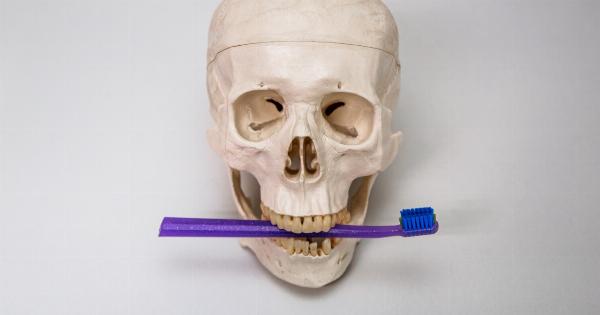Endometriosis is a common and often painful condition that affects millions of women worldwide. It occurs when the tissue lining the uterus, known as the endometrium, grows outside of the uterus.
This condition can lead to a variety of symptoms, including chronic pelvic pain, painful menstruation, and infertility. While the link between endometriosis and these reproductive issues is well-established, recent research has also uncovered a potential connection between endometriosis and heart disease.
What is Endometriosis?
Endometriosis is a chronic condition that primarily affects women in their reproductive years.
It occurs when the tissue that lines the uterus starts to grow outside of the uterus, usually in the pelvic area but it can also spread to other organs such as the ovaries, fallopian tubes, and the lining of the pelvis.
The exact cause of endometriosis is unknown, but several theories exist. One theory suggests that during menstruation, some of the endometrial tissue flows backward through the fallopian tubes and into the pelvic cavity, where it implants and grows.
Another theory proposes that the endometrial tissue may spread through the bloodstream or lymphatic system to other parts of the body. While the exact mechanism of dissemination remains unclear, it is evident that endometriosis can spread to other organs and tissues beyond the reproductive system.
The Prevalence of Endometriosis
Endometriosis is estimated to affect approximately 10% of women of reproductive age, with a higher prevalence among those experiencing infertility or chronic pelvic pain.
It is more common in women who have never given birth or have a family history of the disease. However, endometriosis can affect any woman, regardless of her reproductive history.
Common Symptoms of Endometriosis
The symptoms of endometriosis can vary widely from woman to woman. Some women may experience severe pain, while others may have mild or no symptoms at all. The most common symptoms of endometriosis include:.
1. Chronic pelvic pain: This is the most prevalent symptom of endometriosis. Women with the condition often experience severe pain in the pelvic region, which may worsen during menstruation, intercourse, or bowel movements.
2. Painful menstruation: Many women with endometriosis experience intense menstrual cramps that are not relieved by over-the-counter pain medications.
3. Pain during intercourse: Endometriosis can cause deep pelvic pain during sexual intercourse, making it uncomfortable or painful.
4. Infertility: Approximately one-third of women with endometriosis struggle with infertility or difficulty conceiving.
5. Heavy or irregular menstrual periods: Endometriosis can cause heavy or irregular periods, leading to excessive bleeding and discomfort.
The Connection Between Endometriosis and Heart Disease
Recent studies have suggested a potential link between endometriosis and heart disease.
While the exact nature of this association is still being explored, several factors may contribute to the increased risk of heart disease in women with endometriosis.
1. Chronic Inflammation
Inflammation is a key factor in the development of both endometriosis and heart disease. Endometriosis causes chronic inflammation within the pelvic area, which can lead to the production of inflammatory markers and cytokines.
These molecules can trigger inflammation throughout the body, including the blood vessels and heart. The prolonged exposure to inflammation predisposes women with endometriosis to an increased risk of cardiovascular diseases such as heart attacks and strokes.
2. Hormonal Imbalances
Endometriosis is influenced by hormonal fluctuations, primarily estrogen. Women with endometriosis often have higher levels of estrogen and lower levels of progesterone compared to women without the condition.
These hormonal imbalances can have a negative impact on cardiovascular health. Estrogen, in high levels, is known to promote inflammation, blood clot formation, and vascular dysfunction, all of which increase the risk of heart disease.
3. Increased Risk of Metabolic Disorders
Endometriosis has been associated with an increased risk of metabolic disorders such as diabetes and obesity. These conditions are known risk factors for developing heart disease.
Women with endometriosis may be more prone to metabolic abnormalities, which further contribute to their likelihood of cardiovascular problems.
4. Lifestyle Factors
Women with endometriosis often experience lower quality of life due to the chronic pain and other symptoms associated with the condition.
This can potentially lead to unhealthy lifestyle choices such as poor diet, lack of exercise, and increased levels of stress. These factors, when combined, can increase the risk of heart disease in women with endometriosis.
5. Genetic Predisposition
There may be a genetic predisposition to both endometriosis and heart disease. Certain genetic variations may increase susceptibility to both conditions, indicating a shared genetic link.
More research is needed to fully understand the genetic factors that contribute to the development of both endometriosis and heart disease.
Reducing the Risk of Heart Disease in Women with Endometriosis
Although the link between endometriosis and heart disease is still being investigated, there are steps that women with endometriosis can take to reduce their risk of developing cardiovascular problems:.
1. Maintain a healthy lifestyle: Adopt a balanced diet, engage in regular exercise, and manage stress levels to promote heart health.
2. Regular check-ups: Schedule regular visits with healthcare providers to monitor cardiovascular health and address any emerging issues promptly.
3. Discuss hormone therapy options: Women with endometriosis who need hormone therapy should consult with their healthcare providers about the potential risks and benefits in relation to heart health.
4. Manage pain and inflammation: Seek appropriate pain management strategies and discuss anti-inflammatory treatment options with healthcare providers.
Closing Thoughts
While the connection between endometriosis and heart disease is still being studied, emerging evidence suggests a potential link between the two conditions.
Women with endometriosis should be aware of the increased risk and take necessary steps to protect their cardiovascular health. Further research is needed to better understand the underlying mechanisms behind this association, which will ultimately aid in the development of targeted interventions and treatments.



























